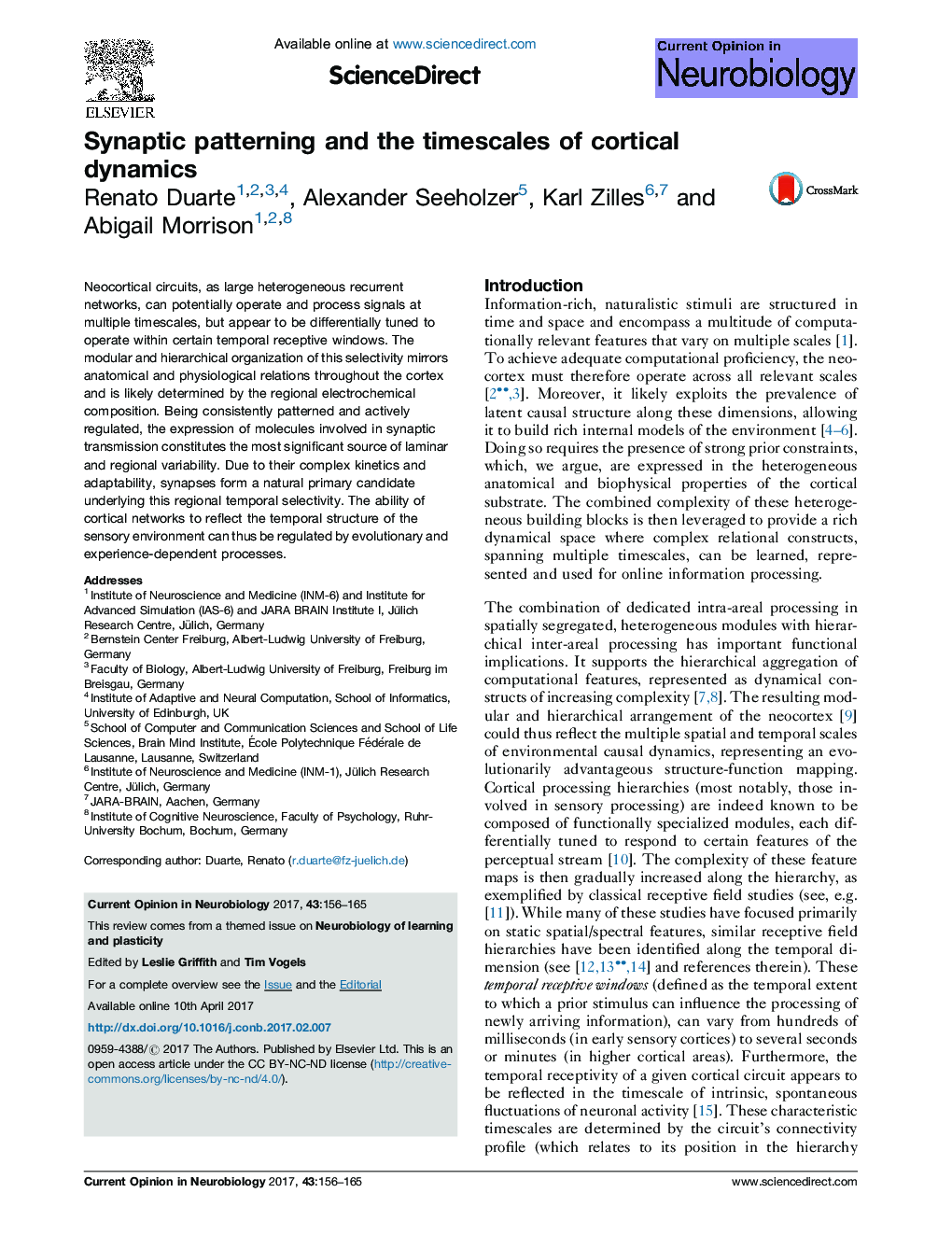| Article ID | Journal | Published Year | Pages | File Type |
|---|---|---|---|---|
| 6266004 | Current Opinion in Neurobiology | 2017 | 10 Pages |
â¢Cortical circuits are tuned to operate at different timescales, in a hierarchy.â¢Synaptic composition reflects regional specialization throughout the cortex.â¢Differences in synaptic kinetics and adaptability impact the circuit's dynamics.â¢Synapses tune the circuit's temporal receptivity and determine it's dynamic range.
Neocortical circuits, as large heterogeneous recurrent networks, can potentially operate and process signals at multiple timescales, but appear to be differentially tuned to operate within certain temporal receptive windows. The modular and hierarchical organization of this selectivity mirrors anatomical and physiological relations throughout the cortex and is likely determined by the regional electrochemical composition. Being consistently patterned and actively regulated, the expression of molecules involved in synaptic transmission constitutes the most significant source of laminar and regional variability. Due to their complex kinetics and adaptability, synapses form a natural primary candidate underlying this regional temporal selectivity. The ability of cortical networks to reflect the temporal structure of the sensory environment can thus be regulated by evolutionary and experience-dependent processes.
